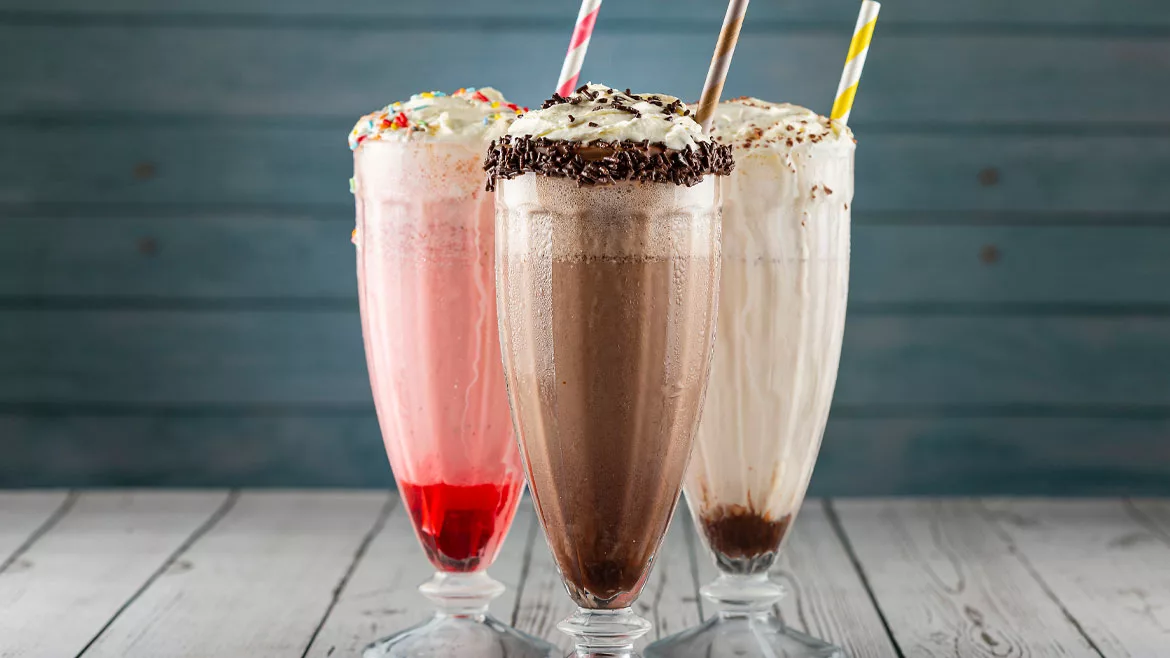Health & Wellness Happenings
Health & Wellness Happenings
By ELIZABETH FUHRMAN
Consumers continue to demand functional and healthful beverage options for all age groups
Consumers know their health is important and/or in trouble. When Beverage Industry conducted its original research survey with InsightExpress, an online market research firm in Stamford, Conn., last year, the magazine asked consumers (split equally between males and females) who have purchased new beverage products, what attributes and claims would make them more likely to try a new beverage. The top three choices of those surveyed were sugar-free/no sugar added, low-calorie and all natural. Vitamin-fortified, diet, antioxidants and weight loss also fell within the Top 10 most desired attributes of a new product.
Consumers’ knowledge may be increasing too from
more media reports about health. In the United States, cardiovascular
disease is the leading cause of death, which is fueled by the fundamental
factors of obesity, hypertension and high cholesterol, according to the
American Heart Association. Looking at specific age groups, cardiovascular
disease is the No. 1 cause of death for those age 65 and older, No. 2 for
ages 0-14 and 25-64, and No. 4 for ages 15-24.
But “better-for-you” and functional
beverages are making headway with consumers. Euromonitor International, Chicago, reports
that approximately $40 billion beverages were sold in the better-for-you
and functional beverage categories in 2005, with that number expected to
grow to more than $46.3 billion this year and more than $53.9 billion in
2010.
Information Resources Inc., Chicago, reported in its
January 2007 Times & Trends report 2006 CPG Year in Review that sales increases in 2006 were led by beverages
offering health and wellness benefits, including ready-to-drink teas,
bottled water and sports drinks. The report also said that consumers’
shift in priorities from pure weight management to total health management
is reflected in slower growth among “light” products, while
organic and functional foods and beverages continue to increase.
“Future growth potential in the better-for-you
space will likely be strongest among organics, products offering specific
health benefits (i.e. heart health and antioxidants), convenient nutrition
(i.e. full or multiple servings of fruits or vegetables in one portable
package), and healthy products targeting kids,” IRI’s report
states.
Function forward
Not surprising, IRI forecasts that trends to watch in
2007 include several health and wellness developments such as growth in
functional ingredient offerings, a surge in healthful kid-focused products,
and a heightened focus on healthcare marketing among retailers.
| Fortified and better-for-you beverage sales (in millions) | |||
| Category | 2005 | Forecasted 2007 | Forecasted 2010 |
| Carbonates - Fortified/functional | $79.9 | $207.9 | $351.1 |
| Fruit/vegetable juice - Fortified/functional | $2,413.3 | $2,452.1 | $2,460.7 |
| Sports drinks - Fortified/functional | $6,657.2 | $7,894 | $9,507.7 |
| Energy drinks - Fortified/functional | $2,281.8 | $2,899.4 | $3,043.4 |
| Elixirs - Fortified/functional | $615 | $665.6 | $730.6 |
| Bottled water - Fortified/functional | $760 | $1,247.5 | $1,639.2 |
| RTD tea - Fortified/functional | $264 | $341.4 | $420.1 |
| Soft drinks – Better for you | $13,402.6 | $15,323.2 | $17,931.2 |
| Carbonates - Better for you | $11,681.1 | $13,158.5 | $15,415.6 |
| Fruit/vegetable juice - Better for you | $166.4 | $189.3 | $212.8 |
| Bottled water - Better for you | $348.9 | $612.1 | $811.5 |
| Concentrates - Better for you | $315.8 | $321.2 | $315.6 |
| RTD tea - Better for you | $872 | $1022.4 | $1155.6 |
| Source: Euromonitor International 2007 | |||
With increased availability
and greater consumer demand, functional foods and beverages are at the
beginning of a major growth wave in the United States. The market was
estimated at $36 billion in 2006, with projected sales of $60 billion by
2009, IRI reports using data from the Institute of Food Technologists. IRI
says functional products with benefits such as these are position for
growth:
Antioxidants found in tea, dark chocolate, coffee,
wine and “superfruits” (pomegranate and acai berries).
Heart products including plant sterols, soy, whole
grain and omega-3.
Digestive aids such as prebiotic and probiotic foods
— primarily dairy, but increasingly available in non-dairy.
Weight loss using green tea extracts and chromium.
But not all functional beverages necessarily fall
under the healthy category, and consumers are being warned about them by
well-known medical personalities. A “Today Show” report by Janice Lieberman last month
cautioned consumers to consider these three questions when choosing a
functional product:
Should you be eating or drinking it in the first
place?
Are the claims meaningful?
Do you really need this
additive?
Beverage-makers should note, Lieberman told consumers
to watch if functional ingredients also are in a product that contains
excess amounts of sugars or caffeine. Her report also warned that adding functional beverages and foods to a
diet will increase the total daily calories. Products should be replaced in
a diet instead of just adding functional choices to calories already
consumed, she said, making a case for functional meal replacements.
Lieberman also said trends pointed to their addition of fish oils for their
omega-3 benefits and vitamin D because of reported cancer prevention in
more products.
Kid’s count
Kids’ beverages are big business too. More than
4 million babies were born in the United States in 2006, which is
comparable to the number of births at the highest point of the mid-century
baby boom. IRI reports the country is officially in the midst of a new baby
boom.
There are 35.8 million children between the ages of 3
and 11, and it is estimated that the sale of both foods and beverages to
kids was valued at more than $15.1 billion in 2006. Of that, $4.3 billion
went for beverages, reports Marilyn Swanson, cooperative state research,
education and extension service national program leader for maternal and
child health at the U.S. Department of Agriculture/ Agriculture Research
Services Children's Nutrition Research Center, in a recent nutrilearn.com
webinar “Nutritious Kids’ Beverages.”
Since the American Beverage Association, Washington,
D.C., and the Alliance for a Healthier Generation’s school beverage
guidelines were released in 2006, the beverage industry has worked to
reduce the number of calories present in beverages throughout schools by
providing students with more low-calorie and nutritious beverages.
That still provides the
beverage industry with a challenge, Swanson says: “Balance what kids
want with what parents will buy or what parents have given their children
money to buy.”
What do children want?
“Generally, they want it to taste good, look good, be something that
their friends are consuming,” Swanson says. “It needs to be
cool. It needs to be hip. It needs to be today’s food … and
I’d like to believe that sometimes, and
even more than sometimes, nutrition plays a part.”
And what will parents buy? “Ideally, parents
will buy healthful foods for their children,” Swanson says. But other
considerations are still taken into account such as cost, convenience,
time, availability and marketing, she adds.
Adults and children choose beverages because of
advertising, another person’s suggestion, convenience, cost,
nutrition, emotional comfort, ethnicity, product image, region of the
country, personal preference and taste, and habit, Swanson says.
“As consumers, the industry and educators, we
have the opportunity to create, market and promote good-tasting, nutritious
beverages to our children so they have the opportunity to grow up healthy
and strong,” she says.
IRI predicts that today’s kids will grow up in
an era of intensified focus on health, nutrition, physical activity and
weight management — opening up significant new opportunity. The
information group expects to see an explosion of healthier products
targeting kids, and both manufacturer and retail initiatives to help kids
and parents select the right products to maintain a healthy diet.
On the flip side, aging baby boomers who face
increased chances of chronic disease also will grow demand for beverages
and food offering specific health benefits, IRI says. But despite an
increased health focus, both pre-seniors and seniors will continue to enjoy
their favorite beverages and foods, including wine, spirits and coffee, IRI
reports.
Calorie counting
Volumes of studies exist regarding beverage
consumption and obesity. Swanson recommended referring to the 2005 Dietary
Guidelines advisory committee’s suggestions, which are updated every
five years, for scientific evidence and nutrition guidelines. The Dietary
Guidelines advisory committee, made of 13 experts appointed by the USDA and
the U.S. Department of Health and Human Services, concluded that children
were low enough in five major nutrients to be concerned. These deficient
nutrients for children are vitamin E, calcium, magnesium, potassium and
fiber.
For adults, low-consumption nutrients consist of
calcium, potassium, fiber, magnesium, and vitamins A (as carotenoids), C
and E. Nutrients in excess as determined by the experts for both age
brackets are fat (saturated and trans), cholesterol, salt and added sugar.
The 2005 Dietary Guidelines’ advice for
maintaining weight includes consuming foods and beverages with many
nutrients and fewer calories. Swanson’s advice to the consumer,
“make your calories count” and to the beverage industry,
“make your calories count.”
Health articles to review
Three major review articles were released in 2006
regarding beverages and obesity that each reached different conclusions,
said Marilyn Swanson, cooperative state research, education and extension
service national program leader for maternal and child health stationed at
the U.S. Department of Agriculture/Agriculture Research Services Children's
Nutrition Research Center in a recent nutrilearn.com webinar
“Nutritious Kids’ Beverages.”
The report “Is There an Association Between
Sweetened Beverages and Adiposity?” in the April 2006 Nutrition Reviews by
Christine M. Bachman, Tom Baranowski and Theresa A. Nicklas looked at 21
different research studies and referred to them with strengths, limitations
and methods of research and came to these two conclusions: “Currently
the evidence regarding sweetened beverage consumption and obesity is not
conclusive,” and “It is important to further
investigate.”
Vasanti S. Malik, Matthias B. Schulze, Frank B.
Hu’s “Intake of Sugar-Sweetened Beverages and Weight Gain: A
Systematic Review,” published in the August 2006 American Journal of Clinical Nutrition took
a different approach as a comprehensive review article. These researchers
looked at 15 cross-section studies, 10 perspective studies and five studies
with experimental trials. Their conclusion was that, “The weight of
epidemiological and experimental evidence indicates that a greater
consumption of sugar-sweetened beverages is associated with weight gain and
obesity,” and “Consumption of sugar-sweetened beverages …
should be discouraged.”
Mark A. Pereira’s article “The Possible
Role of Sugar-Sweetened Beverages in Obesity Etiology: A Review of the
Evidence” in International Journal of
Obesity focused on five randomly
controlled studies, and his studies were trials that lasted between three
weeks and one year. The conclusion he reached: “Only more
high-quality randomized trials on this topic will provide the necessary
data to more completely evaluate the possible link between changes in
sugar-sweetened beverages intake and obesity risk.”
The American Beverage Association, Washington, D.C.,
monitors these reviews, and reports when it feels a study is not up to its
reporting standards. For example, ABA stated Malik’s review
“contained no new research and, most importantly, the authors chose
to ignore critical articles and studies that contradict their
hypothesis.”
“These authors conclude the evidence indicates
greater consumption of sugar-sweetened beverages is associated with weight
gain and obesity, but a recent review by others looking at the exact same
studies concluded that there was a lack of evidence to support this
idea,” said Richard Adamson, senior scientific consultant for the
ABA, in a statement. “Blaming one specific product or ingredient as
the root cause of obesity defies common sense. Instead, there are many
contributing factors, including regular physical activity.
“A study cannot be taken seriously when it only
reviews articles that support its hypothesis, while ignoring the range of
studies undermining its hypothesis,” he added.
As these reviews stated, expect more beverage and
health-related studies to be published in 2007.
Looking for a reprint of this article?
From high-res PDFs to custom plaques, order your copy today!


